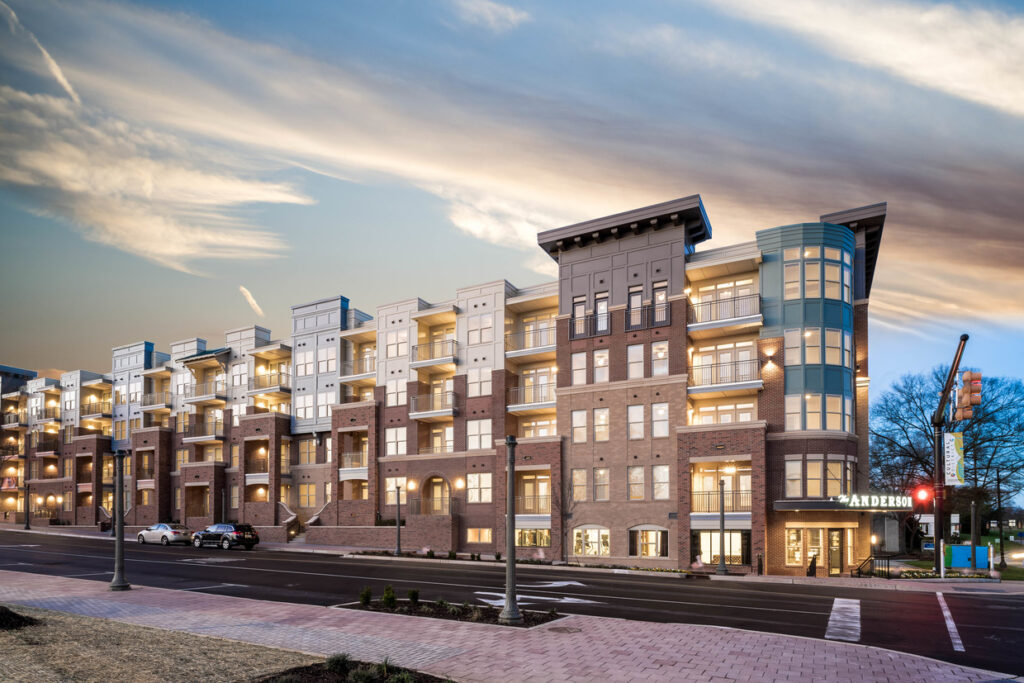HOA Management Services in Graham, NC
William Douglas Property Management offers HOA Management and Association management services in Graham, NC
Graham, NC facts and information
The City of Graham is a municipality located in Alamance County, North Carolina. Graham now has a city charter; however, Graham was incorporated originally by the North Carolina General Assembly as a town on February 5, 1851, and became a city in 1961.
Graham ranks as the 59th largest municipality in North Carolina.
Graham’s population per the 2020 United States Census was determined to be 17,157. This was a population rise of 12.5% from the 2010 United States Census.
Per the 2010 United States Census, Graham’s population was determined to be 14,153.
Graham’s first Census was the 1870 United States Census. This Census determined the population to be 502.
The City of Graham is named for William Alexander Graham (1804-1875), a United States Senator from North Carolina and North Carolina governor.
Graham’s median household income was $36,310 for 2019.
The land area of Graham was 9.62 square miles per the 2010 United States Census.
Per the 2010 United States Census, Graham’s population per square mile was 1,471.6.
Per the 2012 United States Census, there were 1,084 total businesses or firms within Graham.
Per the United States Census Bureau (2015-2019), there were 6,412 households in Graham.
Per the United States Census Bureau (2015-2019), there were 2,481 households in Gibsonville.
Per the United States Census Bureau (2015-2019), 83.3% of Graham’s population who are 25 years of age or older are high school graduates.
Per the United States Census Bureau (2015-2019), 19.7% of Graham’s population who are 25 years of age or older hold a bachelor’s degree or have obtained a higher level of education.
The coordinates or location of Graham per Google Earth – Latitude: 36°04′48.09″N, Longitude: 79°22′12.23″ W
The elevation of Graham at the above coordinates or location per Google Earth is 717 feet.
The elevation of Graham at the above coordinates or location per Google Earth is 639 feet.

Graham and Alamance County, an Overview
Alamance County was formed in 1849 from the western portion of Orange County. Alamance County is named for the Alamance Creek, which runs through the county. Reportedly, “Alamance” is Native American for “blue clay,” the type of clay found in Alamance Creek. The early Native American population of the future Alamance County was the Shakori, the Eno, and the Occaneechi Indians. While European explorers, and traders, trappers of European descent traveled through the future Alamance County. However, permanent settlers of European descent did not begin arriving until the early 1700s. Settlers of European descent did not begin arriving in significant numbers until the mid-18th century. The majority of these early settlers in the 1700s were of German descent and Scots-Irish origin. There were pockets of Quakers within these early settlers. These early settlers were predominantly subsistence farmers, mainly farming small plots of land.
The Battle of Alamance occurred on May 17, 1771, when North Carolina British Royal Governor William Tryon and his militia force engaged the Regulators on the banks of Alamance Creek. The Regulators were mainly rural North Carolina farmers who were objecting to certain aspects of British Crown rule. The Regulators were becoming organized, more vocal, and active in their dissent. Governor Tryon disbursed the Regulators with limited casualties and executed seven captured Regulators for treason at a later date. The Battle of Alamance, as it became known, was a precursor of the American Revolution. This battle was an indicator of the discontent many of the colonial population had with British rule.
During the American Revolution, there were no major battles in what would become Alamance County.
In neighboring Guilford County, the Battle of Guilford Court House on March 15, 1781, is considered the turning point of the American Revolution. While this battle was fought in Guilford County, Continental Army General Nathaniel Greene’s force consisted of militia members from the surrounding counties as well as his Continental soldiers. The Battle of Guilford Court House could be considered a tactical victory for the British. However, it was most certainly a strategic loss. This British “victory” at the Battle of Guilford Court House weakened the British forces to such an extent, it resulted in the Patriot victory at the Battle of Yorktown on October 19, 1781.
The future Alamance County and future Graham area did not change greatly after the American Revolution as far as demographics over the next fifty years. Agriculture-related enterprises were still the primary sources of economic existence. Textile mills and mills towns slowly developed around the 1840s in Alamance County. The first prominent textile mill was Alamance Mills, founded by Edwin Michael (E. M.) Holt (1807-1884) in 1837. Holt is considered the father of textiles in Alamance County. During this time, Alamance Mills produced a well-known fabric known as Alamance Plaid. More textile mills would develop through the late 1800s and early 1900s, and textile production slowly became a leading economic driver of the Alamance County economy. One of his sons, Thomas Michael Holt (1831-1896), was North Carolina governor from 1891 until 1893.
Graham was established as the county seat of the newly formed Alamance County in 1849. Seventy-five acres were purchased for the original town at the cost of $603. This location was more or less in the center of the county. The original town streets were laid out in 1849, along with the county courthouse, courthouse square, and municipal structures. In addition, sixty-eight lots were surveyed for sale to private parties to help fund the construction of the courthouse. The first post office opened in Graham on January 31, 1850, and its first Postmaster was James Sidney Scott. The North Carolina General Assembly incorporated Graham as a town on February 5, 1851. Graham became a city in 1961. The origin of the town name was North Carolina United States Senator and North Carolina Governor William Alexander Graham (1804-1875).
The largest economic development event after the initial founding of Graham was the arrival of the North Carolina Railroad in 1850. The arrival of the railroad in Graham, as what happened in many towns and cities throughout the nation in the 1800s, was a boom to the economy and population. The rail line connecting Charlotte and Goldsboro was finally completed on January 29, 1856. The following day, January 30, 1856, the first train traveled the newly completed rail line to vast crowds of cheering townspeople along the route.
The construction of the first county courthouse was completed in 1852 at the cost of $6,400. It was a two-story structure with a cupola on the very top housing a 400-pound bell. This bell is now an attraction at Sesquicentennial Park in the Court House Square in Graham. As in many towns and cities, the courthouse and surrounding court square in Graham were the town’s central point for many years. This original courthouse was demolished in 1923 and replaced with a four-story courthouse.

In 1904, Graham installed a public waterworks system and electrical generation facility. The installation of electric streetlights followed on December 1, 1905. For the most part, the population of Graham continued to grow after the founding, as evident by the data from the United States Census information that follows.
Agriculture and textiles continued to play an important part in the economy of Graham into the late 1800s and the early 1900s. Along with these textile weaving mills, hosiery manufacturing mills began to become more prevalent and were constructed in and around Graham around the turn of the 20th century. Within Graham, textile manufacturing became a major part of the economy in the early part of the 20th century through the 1970s.
Graham’s Historical Population per the United States Census Bureau
CensusPop.
1870 502
1880379
1890 991
1900 2,052
1910 2,504
1920 2,366
1930 2,972
1940 4,339
1950 5,026
1960 7,723
1970 8,172
1980 8,674
1990 10,426
2000 12,833
2010 14,153
The Stock Market Crash of 1929 and the following Great Depression of the 1930s brought economic difficulties to the nation. The market for textile production dropped precipitously along with demand for other consumer products. Textile production is Graham and the surrounding areas, such as Burlington, may have faired better than other areas, because of the large volume of textile mills able to weather the economic storm better than areas with less industrial capacity.
The recovery from the Great Depression coincided with the beginning of World War II in the late 1930s. Demand for textiles increased drastically and production increased drastically during this period. This might be represented by the United States Census population increases between 1930 of 2,972 and 4,339 in 1940 in Graham. Textiles were still a major factor within the Graham economy through the 1970s and early 1980s. The weak economy of the late 1970s and early 1980s and the introduction of lower-cost foreign-made textiles initiated the rapid decline of textile manufacturing in the United States. Even so, the North American Free Trade Agreement, known as NAFTA, the free trade agreement between the United States, Canada, and Mexico, had the most unfavorable consequences on textile production when it was signed into law in 1993. Almost immediately, NAFTA began negatively impacting textile manufacturing within the United States.
Since the 1980s and 1990s, Graham has weathered the storm by developing a more diverse economic base. While there are larger still manufacturing operations in place, they represent varied industries. There are also a greater number of smaller-scale manufacturing operations that are less susceptible to economic downturns because of their size and ability to adapt to economic situations. These varied industries represent hosiery, plastics, electronics, metalworking, and general textile production. A relatively new trend of the last fifty years is service-oriented businesses that have increased in proportion as well to complement manufacturing jobs. Graham has also developed into a bedroom community for both Greensboro and Burlington. It is becoming an easy commute for Durham, Cary, Raleigh, and the Research Triangle in general. This diverse economy that has been implanted in the last thirty years has permitted Graham to weather economic ups and downs more evenly than ever before in its history.
Need Association Management?
Contact Us
How to Start
The Process of Working With Us


REQUEST A PROPOSAL
Request a proposal online or call us directly.


WE WILL REVIEW YOUR CASE
Our team of highly trained professionals will review your case.


RECEIVE A CUSTOM TAILORED PLAN
We will create a customized management plan for your community.


SEAMLESS TRANSITION
We will implement a seamless management transition and integrate our tech.


SIT BACK & RELAX
Enjoy better, affordable and a more reliable, hassle-free management system.




